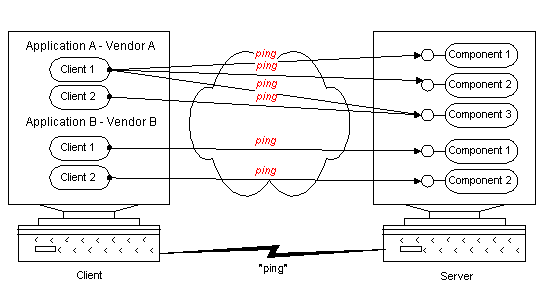
Most application level protocols require some kind of lifetime management. The component needs to get notified when a client machine suffers a catastrophic hardware failure or the network connection between client and component breaks for an extended period of time.
A common approach to this problem is to send keep-alive message at periodic intervals (pinging). If the server does not receive a ping message for a specified time, it declares the client "dead."
DCOM uses a per machine keep-alive message. Even if the client machine uses 100 components on a server machine, a single ping message keeps all the clients connections alive. In addition to consolidating all the ping messages, DCOM minimizes the size of these ping messages by using delta pinging. Instead of sending 100 client identifiers, it creates meta-identifiers that represent all 100 references. If the set of references changes, only the delta between the two reference sets is transmitted. Finally, DCOM piggybacks the ping message onto regular messages. Only if the entire client machine is idle with respect to a given server machine does it send periodic ping messages (at a 2-minute interval).

Figure 9 - Consolidated lifetime management
DCOM allows different applications (even from different vendors) to share a single, optimized lifetime management and network failure detection protocol, reducing bandwidth significantly. If 100 different applications with 100 different custom protocols are running on a server, this server would normally receive one ping message for each of those applications from each of the connected clients. Only if these protocols somehow coordinate their pinging strategies can the overall network overhead be reduced. DCOM automatically provides this coordination among arbitrary COM-based custom protocols.